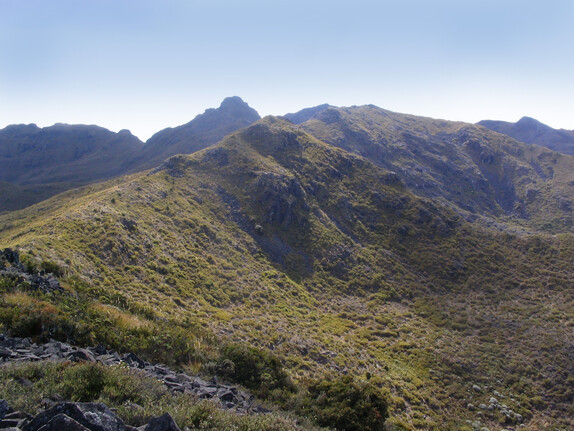On the 60th anniversary of the Organization for Tropical Studies
From Costa Rica, an original way to understand neotropical nature in depth
(an English translation of the original article, appearing on Meer.com)
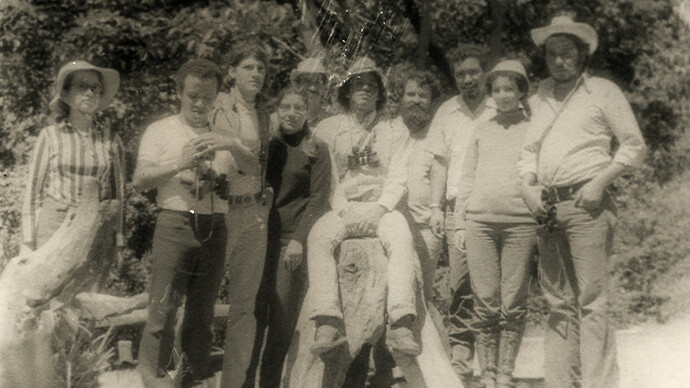
In mid-December 2023, I was invited as a co-speaker at the event The Historical Contribution of OTS: Remembrances of 60 Years, together with renowned biologist Pedro León Azofeifa; it took place at the local headquarters of OTS, on the campus of the University of Costa Rica (UCR). This was due to the fact that last year the Organization for Tropical Studies (OTS) reached its 60th anniversary, and ours represented the closing of a cycle of conferences organized during the year.
As I said, that afternoon, apart from feeling very honored by the invitation, it was also a pleasure to share the podium with Pedro, a colleague for whom I have always felt a deep affection and admiration. I recorded this in my article, “Cabeza de…, León?” which I published 19 years ago in the newspaper La República (12-V-05, p. 16), when he was awarded membership in the National Academy of Sciences of the USA. And, although we took very different paths, he in the field of molecular biology, and I in that of agricultural and forestry entomology, we have come together in instances and areas relevant to the conservation of the environment and the scientific development of the country. An expression of this was the preparation of the article “Costa Rica’s biodiversity in two centuries of independent life, and a look towards the tricentennial,” which, headed by our common and dear colleague and friend Rodrigo Gámez Lobo, we published in the Journal of the National Archive of Costa Rica (2021, No. 85) on the occasion of the celebration of the bicentennial of our independence.
Now, as for our talks that afternoon, Pedro referred to the early years of OTS, not only with his remarkable expository ability, but also with great knowledge of the subject, since for six years (1998-2004) he served as President of the Board of Directors of this entity. For my part, I gladly accepted to do so, because in recent years I have dedicated myself to researching the historical development of our natural sciences, and because with OTS — although occasional — I have had a very positive relationship, not only in my student years, but also as a professional. That is why I titled my conference — barely half an hour long, and which was more a kind of “diversion” — “An opinion about the historical significance of the Organization for Tropical Studies in Costa Rica, plus some personal recollections.”
It is to her that I wish to refer in her essential aspects, so that my words of that unforgettable afternoon are not carried away by the wind and fall into the desolate depths of oblivion.
A look at the 19th century
In fact, to fully understand the emergence, as well as the historical significance of OTS, it is essential to look back at the 19th century, since it was in the middle of that century when the first European naturalists arrived in Costa Rica.
Some of them were transients, but there were four who settled in the country for periods of varying length and also wrote formal articles in magazines, or even books, on different aspects of our nature. The first was the Dane Anders Oersted (1846-1848), who was followed by the Germans Karl Hoffmann (1854-1859), Alexander von Frantzius (1854-1868), and Helmuth Polakowsky (1875-1876). Likewise, after a long interregnum — more than a decade — their work would be continued and increased by the Swiss naturalists Paul Biolley, Henri Pittier, and Adolphe Tonduz, hired by the government of Bernardo Soto Alfaro, during the Liberal Reform of 1885-1889.
In turn, these pioneering efforts were expanded and enriched by the monumental work Biología Centrali-Americana, which was an initiative of Englishmen Frederick D. Godman and Osbert Salvin, and which was captured in 67 volumes, published over a period of 36 years (1879-1915), written by numerous European and American specialists. In addition, they were favored by an alliance established in 1862 by von Frantzius with the Smithsonian Institute — restricted to birds and mammals — which also allowed the training of José Cástulo Zeledón as the first Costa Rican naturalist, who was to act as a kind of link or bridge between the German and Swiss naturalists already mentioned.
This would also influence the founding of the National Museum in 1887 as a space for meeting and exchanging knowledge between established and emerging scientists of the time (Zeledón, Juan José Cooper Sandoval, Anastasio Alfaro González, José Fidel Tristán Fernández, Otón Jiménez Luthmer and Alberto Manuel Brenes Mora), which led to the institutionalization of biological sciences in the country. In the 20th century, this would culminate in 1957 with the founding of the Department of Biology at UCR, which in 1974 became the current School of Biology, which made possible the training of biologists with an emphasis on botany, zoology, genetics, and ecology.
About this process, the reader can consult three recent articles of mine, published in academic journals: “The historical routes of the development of biological sciences in Costa Rica” (2022), “Naturalists and foreign scientists influential in the development of biological sciences in Costa Rica” (2023), and “The pioneers of entomology in Costa Rica” (2023). The first one appeared in Herencia, and the other two in the Journal of Tropical Biology.
Emergence and validity of OTS
Although the creation of the National Museum saw the start of a continuous flow of foreign botanists and zoologists — mainly Americans — this did not occur in a systematic or articulated manner, but rather randomly.
However, this situation changed radically with the emergence of OTS — whose birth certificate dates back to March 5, 1963, in Florida — as an academic consortium of seven American universities and UCR. This is attested by the article “A recount of the history of biology in Costa Rica, in the voice of Dr. Rafael Lucas Rodríguez Caballero” (Herencia, 2023) which, although written by me, its core corresponds to an invaluable, almost unknown text — a conference given in August 1972 — by that distinguished scientist and educator, who in turn was co-creator of the creation of OTS.
In this text, Don Rafa — as he was known in the university environment — narrates the first attempts to create an educational entity oriented towards the in-depth study of neotropical nature, but the idea would not crystallize until 1963. It was during those times that two truly exceptional scientists, as well as skilled managers in the world of science, came together in a common purpose: he, as director of the Department of Biology at UCR, and Jay M. Savage, then a professor at the University of Southern California. Botanist Don Rafa and herpetologist Savage, such contrasting specialties were not an obstacle for their minds to converge in terms of planning and the realization of a very original and innovative project in the tropical world. In effect, it was an academic adventure that was unifying and integrating in its approach, as well as of great scientific scope.
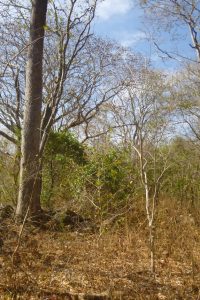
That adventure materialized in OTS, whose first great achievement is having reached 60 years of existence, that is an unusual durability, because for entities like these — which do not have guaranteed permanent funds — it is extremely difficult to maintain themselves over time. Thanks to those who have known how to guide their destinies, as well as to those people and philanthropic agencies that have contributed funds for its financing, the trajectory of OTS has been very fruitful, despite having faced really adverse situations at certain times.
From an administrative and logistical point of view, although throughout its history its administrative headquarters were in rented buildings, either in San Pedro de Montes de Oca or in Moravia, since May 14, 2004 it is located in a beautiful building, within UCR Research Center. It also has three biological stations in the national territory, in contrasting ecological zones: La Selva (Sarapiquí), Palo Verde (Guanacaste) and Las Cruces, Wilson Botanical Garden (San Vito).
OTS as a watershed
When one analyzes the history of biological sciences in Costa Rica, one realizes that, for more than a century, research had a bias toward purely taxonomic aspects, both of flora and fauna. This was logical, since foreign researchers came to the country attracted by its very rich biodiversity, which included not only the astonishing number of species that characterize it, but also the singular anatomical and physiological adaptations, symbiotic relationships, behaviors, pollination systems, etc., which, sometimes because of their unusual nature, seemed to belong to the realm of surrealism. I think that, millions of years before this pictorial and literary current emerged, in the natural world — and in particular, the tropical one — flora and fauna had already surpassed almost all the limits of the imagination.
Thus, in their eagerness to discover and describe the ineffable forms and phenomena they encountered at every step they took in our jungles and coasts, or when diving in our seas, foreign researchers focused their efforts on inventorying thousands of species of plants and animals, without necessarily delving — due to lack of time and economic resources — into the webs of ecological relationships, both structural and functional, of which these species are part, and even less into aspects relevant to the genetic or evolutionary relationships of the taxonomic groups of interest to them. But all this would change with OTS.
However, it must be made clear that the original expectations of OTS were of a teaching nature. This is clearly seen in the aforementioned article by Don Rafa, who, referring to the genesis of OTS, relates the following:
This began with the struggle of almost ten years of a professor from the University of Michigan, named Norman Hartweg, who dreamed of establishing a research center for science in the tropics. He fought to establish it in southern Mexico, where he was scorned and totally discouraged. However, on one occasion some Americans came to Costa Rica, who came to study the possibility of giving summer courses for teachers from their country. At that time, John de Abate Jiménez was in the Department [of Biology], and he and I became friends with this group, and for three years we gave intensive courses in tropical biology for American university professors. The year after we started, in 1962, we promoted a continental conference, with the participation of many countries of America, from the United States to Argentina, with the aim of uniting efforts for the study of the tropics, and from that meeting the Organization for Tropical Studies was born.
In fact, these early efforts to familiarize American professors with the tropical world took a different turn, and soon evolved into the offering of a graduate course in English for both American and Latin American students. This course was titled Tropical Biology: An Ecological Approach, although it has also been called Fundamentals of Tropical Ecology. Although it is said to have begun in 1963, the actual course did not begin until 1965, as Daniel Janzen told me recently. Because of its undeniable success, it is offered to this day, along with other graduate and undergraduate courses that have emerged in more recent years.
From the very beginning, this classic or foundational course was conceived as a full-time, two-month, intensive field research course. However, two brilliant young men who had taken it, Daniel Janzen and Norman Scott, infused it with an original methodological approach, based on the performance of short experiments. To do this, each student had to observe some fact or phenomenon that caught their attention, ask an intelligent question about it, turn it into a hypothesis, and determine the veracity of this by means of an experiment that could be carried out in a few hours of field work. Incidentally, they came from very different disciplines, the first from entomology and the second from herpetology; Daniel was a disciple of the famous Ray F. Smith — one of the proponents of the integrated pest management paradigm — at the University of California, on its Berkeley campus, while Norman was a disciple of the aforementioned Savage, at the University of Southern California.
As I stated in one of the academic articles I cited at the beginning of this article, “from the point of view of teaching biological sciences, these intensive field biology courses represented a kind of watershed or milestone, that is to say “a before and after,” in the way of perceiving and understanding tropical nature, and since then we have applied that approach and that methodology to our students throughout our academic life.” The latter is very satisfying to me, because some of my foreign students at the National University (UNA) or the Tropical Agricultural Research and Higher Education Center (CATIE) years later told me how enriching and gratifying that academic experience was, which they also replicated successfully in their teaching work.
At a certain point, however, the work of OTS began to transcend the educational field to also encourage research activities in tropical ecology. Indeed, over the years, and thanks to the improvement and modernization of its infrastructure, the OTS stations became ideal environments for the development of long-term projects, led by professors from some American universities and financed by various entities. This has allowed its graduate students to carry out research there for their theses, thereby achieving extraordinary advances in the understanding of the complex phenomena and mechanisms that determine the abundance, structure, functionality, distribution, persistence, and evolution of tropical biota, as well as its interrelations with the physical environment.
For example, at La Selva alone — the oldest of the stations, once owned by the famous ecologist Leslie R. Holdridge — the research carried out there has produced more than 4,500 publications, which allows us to affirm that it is one of the best studied tropical sites on the planet. It is pertinent to emphasize that these and many other publications correspond to articles appearing in very high-level scientific journals, as well as book chapters, complete books, and other types of documents. By the way, all this information is systematized in the excellent BINABITROP database — sponsored by OTS — and is available on the Internet for any interested user.
My relationship with OTS
Before continuing, I would like to clarify that I do not intend to review the history of OTS here — since I am not the one to do so — but rather to recount some personal memories, as I pointed out at the beginning.
Fortunately, there are three excellent publications on this subject. The first is a chapter from the book Tropical Rainforest Diversity and Conservation, written by Donald E. Stone — one of its long-time directors — titled, “The Organization for Tropical Studies (OTS): a success story in graduate training and research” (1988). The second is the article, “Evolution of the Organization for Tropical Studies” (Revista de Biología Tropical, 2002) by Leslie J. Burlingame. The third is another article, “The Organization for Tropical Studies: History, accomplishments, future directions in education and research, with an emphasis on the contributions to the study of plant reproductive ecology and genetics in tropical ecosystems” (Biological Conservation, 2021), written by Oscar Rocha and Elizabeth Braker. Hopefully, one day a complete book will be written about the history and achievements of OTS!
Now, as for my recollections, I must point out that my relationship with OTS has been discontinuous and even intermittent over half a century, but always very positive.
It all began when, as it was a postgraduate course, having just obtained my university bachelor’s degree in Biology — which I completed at the end of 1973 — at the beginning of the following year, in the summer or dry season of 1974, I was accepted into the Population Ecology course, which I will refer to in detail later.
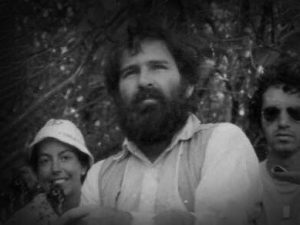
Thanks to my performance in that course, in the summer of the following year its coordinators, the herpetologist Douglas Robinson, the ornithologist Gary Stiles and the ecologist Sergio Salas — professors at UCR — appointed me as their assistant when I was around 22 years old. In addition, except for Douglas, they knew me from before. In this regard, in the summer of 1973 I was Sergio’s assistant in the Natural History of Costa Rica course, as I narrate in the article, “Sergio Salas, mentor and friend” (Nuestro País, 20-II-2018), while in the second semester of 1974 I had taken the Animal Behavior course with Gary.
As an assistant, I was in charge of preparing a classroom at the La Julieta School in Parrita and a room at the Palo Verde station as workspaces for the students. We brought stereoscopes, microscopes, scales, wooden and glass cages, entomological boxes, chemical reagents, and a very select library. In addition, in several wooden trunks we carried a large number of glass jars — to preserve specimens of invertebrate animals and small vertebrates — binoculars, traps, plant presses, wire grids, mist nets, insect-catching nets, thermometers, hygrometers, chronometers, hand counters, measuring tapes, anti-venom serums, etc. To do this, I had the essential help of some OTS drivers, such as Edgar Murillo and Jessie James, the latter a Costa Rican, but with a name similar to that of the legendary bandit of the Old West, and who gave rise to a brand of jeans that was very famous at the time.
There were several anecdotes I had with them. For example, on the way to Guanacaste, three of the truck’s tires were punctured — they were so worn out — and there was no money to buy new ones. So Edgar, after calling OTS three times on the same day and working with Jorge Campabadal Madrigal — then resident director — and his efficient secretary Flor Torres Acosta, had to resort to some trick I don’t remember to [purchase] them on credit, while the other one could be repaired. Likewise, with Jessie, the battered OTS Land Rover broke down, and we had to leave it at a garage in Quepos, as well as hitch a ride with a truck delivering furniture and household appliances. In the middle of summer, on the twisting and barely graveled road to Puriscal, we had to remain seated on the floor of the truck’s airtight box with our backsides battered from so much jumping, suffocated, and swallowing dust, as well as attentive that none of those things — which on the curves and slopes wanted to come loose from the ropes with which they were tied — would hit us.
Once these events were over, the really nice part would come later, with the help to the students — coming from several Latin American countries — by transporting them by car to the experimental sites, as well as helping them with logistical aspects for their projects. However, Douglas, Gary, and Sergio not only honored me by choosing me as an assistant for such an important course, but they also asked me to design two field experiments for the students to carry out, which required a lot of imagination, as well as many days of work, due to my doubts about whether I would meet their and the students’ expectations. That was in 1975, as I indicated previously, but in 1976 they asked me for the same thing, plus a talk about the ecological foundations of biological pest control, given that in the middle of that year I had taken the International Course on Biological Control in Mexico, thanks to a scholarship from the Organization of American States (OAS).
In fact, driven by an inner drive to better serve society as a professional, I had already decided by then — not without pain — that I was moving away from basic or “pure” biology to venture into biology applied to agriculture and forestry. That would be my field of specialization, which would be cemented by obtaining a doctorate in Entomology, with an emphasis on integrated pest management, at the University of California, on its Riverside campus.
A unique field course
It is worth noting that, although OTS offered its classic course, Douglas Robinson felt the need to create an analogous course, but taught in Spanish, since very few Latin American students were fluent in English. Therefore, in 1971, on his own, he dared to teach the course Population Dynamics, exclusively for UCR students. By the way, the concept of “dynamics” brings together the four major factors (birth rate, immigration, mortality, and emigration), which determine the course of plant and animal populations over time, which is expressed in their abundance, distribution, and persistence. The little I know of this attempt I owe to my dear friend and colleague Freddy Pacheco León, who was one of those who took that course, which had a lot of “experimental” or “pilot” in it.
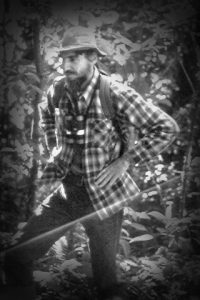
Persistent in his projects, this pioneering experience allowed Douglas to make a new attempt three years later, but now accompanied by the aforementioned Gary Stiles and Sergio Salas as accomplices. They knew well the methodology used in OTS because, while he was doing his postgraduate studies at the University of California, on the Los Angeles campus, Gary had taken the first OTS course in 1964, while Sergio enrolled in it in 1967.
They were joined by a select group of scientists, both national (Carlos Valerio Gutiérrez and Carlos Villalobos Solé) and foreigners; the latter were the Mexican José Sarukhán and the Venezuelan Ernesto Medina, plus Americans Robert Hunter, Monte Lloyd, Gary Hartshorn, George Powell, and Leslie Holdridge. This course was called Population Ecology, and it was the one I took. From Costa Rica, the students were Olga Méndez Arburola, Julio Sánchez Pérez, and myself, plus Spaniard Rafaela Sierra Ramos — resident in the country — as well as foreigners Gustavo Ramos Estrada (Guatemala), Amado Suazo Velásquez (Honduras), Pedro E. Falco González (Colombia), and Carmelina Flores de Lombardi (Venezuela).
As a funny curiosity, at that time the cost of registration was ₡515, equivalent to USD$50. Now it sounds funny and almost prehistoric, but foreign students were informed that from the Juan Santamaría airport they could travel by bus to the center of San José for ₡1.50, but if they preferred to take a taxi to the Holland House hotel — near UCR, where they would be housed — the fare was ₡28. These abysmal differences are not only due to the exchange rate per se — from ₡8.54 at the beginning of 1974 and today about ₡500 per dollar — but especially to the excessive increase in the cost of living in Costa Rica. In this regard, I recently took a taxi from the airport to my home in San Pablo de Heredia, and they charged me $40 for just 11 km of travel, while UCR is 23 km from the airport. But, well…let’s leave aside the unpleasant things, and move on to the nice things of the enriching experience lived in the OTS course.
Indeed, as part of the academic curriculum, unlike many courses at UCR — which are based exclusively on theoretical classes — in Biology there were always practical activities to complement the theory that was taught. Normally they included long days in the laboratory or field trips, the latter on weekends so as not to interfere with the tight schedules of the working days.
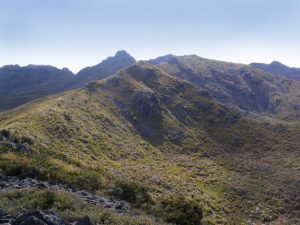
However, Population Ecology was very different from anything we had experienced before, as it was an intensive course in the field. Focused on understanding in situ the interactions between plants and animals in the context of particular and contrasting ecosystems, for almost two months we were able to ascend from the plains of the South Pacific, at sea level, to the Talamanca moor, at almost 3,500 m above sea level. To do so, we spent just over a week in each of the following locations: Parrita, Palo Verde, La Selva, Monteverde, and Cerro de la Muerte; to these was added a visit to CATIE, in Turrialba.
It is pertinent to point out that in Palo Verde and La Selva we stayed at the OTS stations, where there were dormitories with bunk beds, a dining room, and a large room for working, storing equipment, instruments, and the library, and where conferences, debates, etc. were also held. However, for the other locations we had to resort to whatever was available. For example, to work in Parrita we used the small hotel of the Banana Company in Quepos as our headquarters, where they provided us with a room; in Monteverde, they lent us the school — since the children were on vacation — and we stayed in two or three houses of Quaker families, which functioned as boarding houses; finally, to be close to Cerro de la Muerte, we stayed at the La Georgina hotel in Villa Mills, where they allowed us to use a small room for the course activities.
This was, in fact, a unique educational experience. For almost two months we were completely immersed in nature, while at a constant pace we carried out various activities that complemented each other in an optimal way. The most important were undoubtedly the field experiments, of which there were two types: group projects — prepared by the coordinating professors or by invited specialists — and individual projects. The latter were conceived by each of the students, but each draft had to be submitted for approval by classmates and professors, which gave rise to unkind and sometimes quite heated discussions. And, of course, during those two months there was not a single draft that was spared from being modified and rethought, and quite a few ended up in the trash can. “Criticize, criticize, criticize!” was the motto of our professors — true mentors — whose aim was to contribute to the formation of critical and creative minds.
Obviously, once the experiments had been carried out, which began very early and were finished before midday, the results had to be analyzed in statistical and biological terms, as a preliminary step to preparing the final report and presenting it to the group. This was done in the afternoons, but sometimes there was not enough time, so work had to be done until late at night, even if it meant getting up early the next day. And once the final report had been presented to the group, in this second sieve criticism again prevailed, because our teachers were guided by the principle and the conviction that objective and healthy criticism is the best way to refine and perfect any work. How much we suffered, because thinking hurts! But how much we learned!!!
This practical training was complemented by rich theoretical lectures, given almost every evening by the professors and invited experts. In addition, there was sometimes the opportunity to interact with renowned researchers, as well as with students working on their Ph.D. theses, as part of the long-term projects of these tutors at the OTS stations. In other words, during those two months, we were literally immersed in ecological theory and recent field findings generated in situ so that the course was a true life experience, as I stated in one of my articles cited at the beginning.
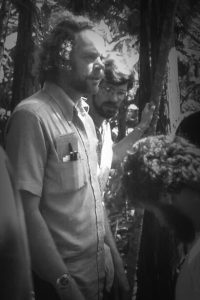
To conclude this section, when Douglas died, I wrote a sort of obituary in the press (Semanario Universidad, 28-VI-91, p. 4) in which I summarized what, in essence, was the Population Ecology course. In it I said that Douglas “took us to the mountains, and with Gary Stiles and Sergio Salas, he put us to work in shifts of more than fifteen hours a day for two months to study the ecology of natural populations. The course was an expurgation of the bookish, of the easy report, of the biology of the pamphlet. There, amidst the exhaustion, we were born as ecologists.”
A truly indelible mark
Although, as I indicated in previous pages, I had already decided to head towards applied entomology in 1975, the training that the course left me reaffirmed the notion that the management of agricultural and forest pests is in no way dissociated from the ecology of natural populations and communities. In fact, we know well that the presence of pests is in itself the expression of population imbalances in agroecosystems.
For this reason, from then on, I felt the need to increase my training in the ecological field. So, in 1975 I took the opportunity to take the course Advanced Ecology, taught by Gary Stiles and Susan Smith — offered only once, I believe — as well as two seminars in 1976, titled Competition and Predation, both taught by Carlos Villalobos. In addition, my undergraduate thesis dealt with plant-insect relationships, after studying for two consecutive years the phenology and pollination by flies of the duckweed (Aristolochia grandiflora). It was directed by Gary, while the other members of the Thesis Committee were Sergio, Carlos Valerio, Carlos Villalobos, and Dr. Luis A. Fournier Origgi, professor of the courses Plant Ecology, Forest Botany, and Research Methods.
Later, in early 1979, when starting graduate school at the University of California, it was mandatory to take the course Insect Ecology. That time, it was taught by Dac A. Crossley, a visiting professor at the University of Georgia, who had been a disciple of the famous ecologist Eugene P. Odum. After attending classes for a couple of weeks, the course seemed very basic to me, so I asked the Graduate Studies Division to release me from taking it and to recognize the Population Ecology course instead. Fortunately, this happened quickly, given the high reputation of OTS in the academic field in the USA.
In later quarters, I enrolled in Insect Population Ecology, taught by Robert F. Luck, and out of personal interest I audited the Introduction to Population and Community Ecology, taught by Clay A. Sassaman in the Biology Department. Also, after taking Calculus I and Calculus II, I audited the Mathematical Ecology and Population Genetics courses, taught by Richard F. Green and Charles E. Taylor, respectively, which I had to drop out of because I couldn’t keep up with my required courses and the research work for my thesis. Incidentally, the latter was entirely agroecological in nature, analyzing the population fluctuations in time and space of the lepidopteran Heliothis virescens, whose larva is a serious pest of cotton and other crops.
This is how, with a solid background in ecological entomology, upon my return to the country, for several years I was in charge of teaching the courses on General Ecology and Management of Forest Diseases and Pests, for the degree in Forest Sciences Engineering at the School of Environmental Sciences at UNA. I also had the opportunity to teach the course on Animal Population Ecology, as well as Analysis and Control of Vertebrate Pests, for the Master’s Degree in Wildlife Management, also at UNA. Later, upon moving to CATIE, for almost 20 years I was in charge of the course on Agroecological Management of Insect Pests within the Master’s Degree in Plant Protection. In addition, of the 66 theses in which I participated as director or as a committee member — whether for undergraduate, master’s, or doctoral degrees — all referred to the knowledge and applications of key ecological aspects to manage agricultural or forest pests without causing adverse effects to the environment.
It is worth mentioning that, during my years as a teacher and researcher at UNA, I was invited several times by OTS as a lecturer in the Population Ecology course, on topics such as the seasonality of insects in tropical environments, herbivory in insects, some insect/plant relationships, and the practical applications of the knowledge of predator/prey and parasitoid/host interactions, which allowed me to return to long-awaited places, such as La Selva, Palo Verde, and Monteverde. In addition, when in 1985 it was decided to expand the academic offering and establish the Agroecology course, I was asked to be a member of the management committee of such a relevant academic project, alongside renowned scientists Robert Hart, Jack Ewel, Barbara Bentley, Rodrigo Gámez, Steve Gliesmann, Steve Risch, and one or two others that escape my memory. I was also a speaker in the first version of this course and several more times, as well as when the course was taught in Spanish, with the title Agroecology.
In short, the original and suggestive ecological approach learned and assimilated in that memorable summer of 1974 — exactly half a century ago — shaped my mind indelibly and marked my professional life forever.
To conclude, what I have narrated so far and a few more anecdotes, was what I recalled with Pedro León that December afternoon last year, permeated by the fresh trade winds of the Christmas season, when the soul is more sensitive to remembrance and gratitude. Therefore, I took advantage of this unique occasion to give thanks for everything I received from OTS and my mentors. And, so that there is no risk of my tribute disappearing, although Douglas and Sergio are no longer with us, Gary — now 81 years old — resides in Colombia, and friends Daniel Janzen and Norman Scott are 85 and 89 years old, respectively, in these pages I record and reaffirm how everlasting their formative legacy has been in me, which I also tried to instill in those who were my disciples for more than 30 years. Thank you very much!
(Header photo: View of a tropical rainforest in the Caribbean. Photo: Luko Hilje via Meer.com)

